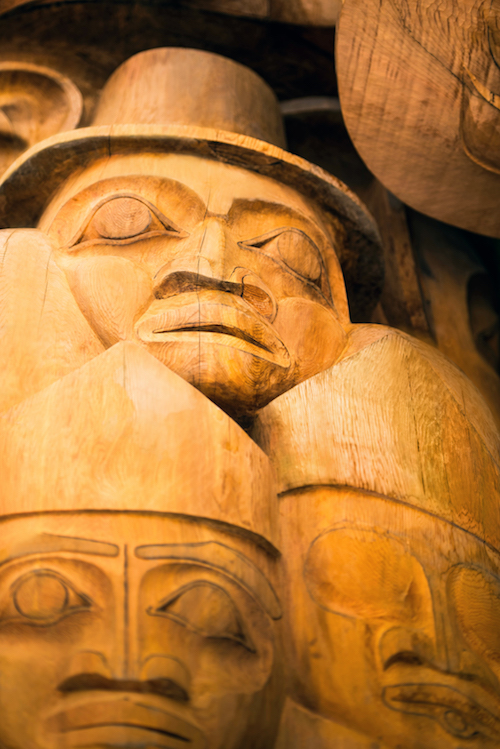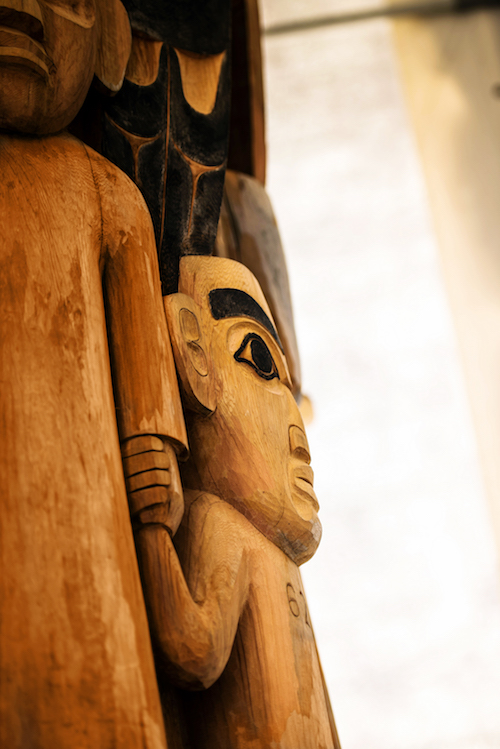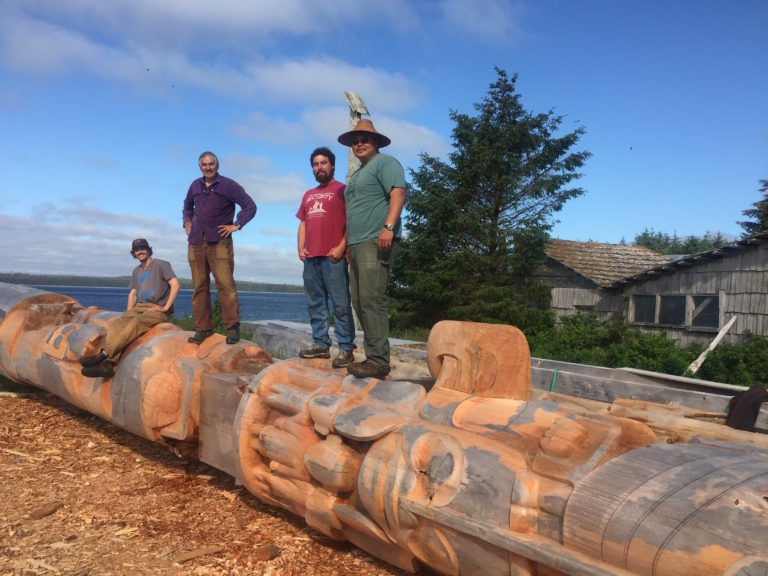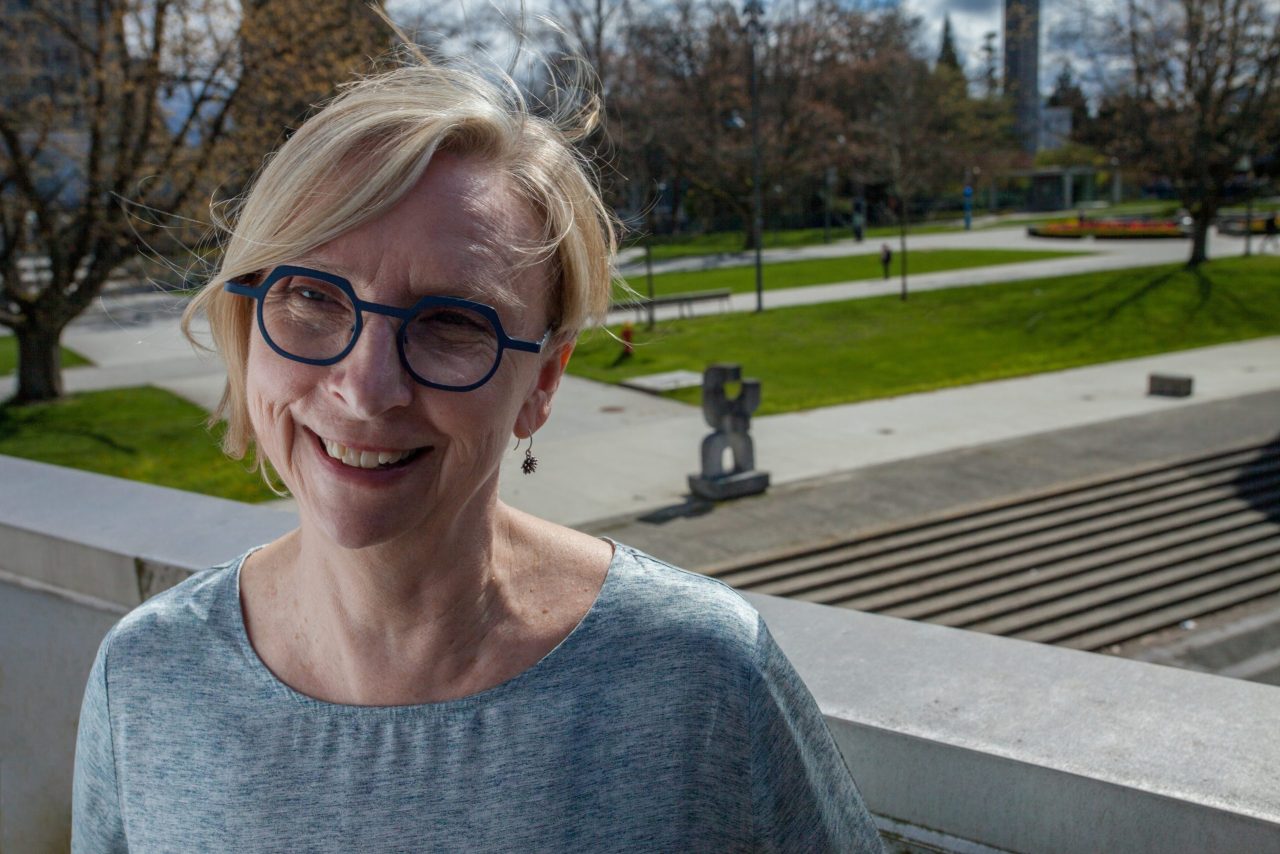1 Apr 2017, 1 pm
Intersection of Main Mall and Agronomy Road, UBC
Reconciliation Pole Raising: Honouring a Time Before, During and After Canada’s Indian Residential Schools
-
James Hart
Presenter
Reconciliation Pole is situated on the traditional, ancestral, and unceded territory of the Musqueam people. This 800-year-old red cedar tree was shipped from the island of Haida Gwaii and is being carved under the direction of master carver and hereditary chief, 7idansuu (Edenshaw), James Hart with the helping hands of Gwaliga Hart, John Brent Bennett, Brandon Brown, Jaalen Edenshaw, Derek White, Leon Ridley and late son Carl Hart, all of the Haida Nation of Haida Gwaii.
The pole will be installed on Saturday, April 1, 2017* everyone is invited to attend. Please visit www.ceremonies.ubc.ca/reconciliation-pole for further information and to download the event program (PDF).
Watch a recording of the speeches at the event.
The artist and his assistants are currently finishing the pole on site at the intersection of Main Mall and Agronomy Road. Visitors are welcome to view the pole during its completion.
Reconciliation Pole joins the Indian Residential School History and Dialogue Centre, located between the Koerner Library and Barber Learning Centre, in assuring that the history of Canada’s Indian Residential Schools and what they represent in our larger history will not be forgotten.
Reconciliation Pole recognizes the complex aspects of reconciliation related to Indian Residential Schools, which were instituted by the federal government of Canada in the second half of the nineteenth century, and operated for more than 100 years, with the last school closing in 1996. Located across Canada, the schools separated an estimated that 150,000 children from their parents, families and culture. Many students died in the schools and many more suffered severe forms of psychological, physical and sexual abuse. Both Reconciliation Pole and the Dialogue Centre provide ways to develop an understanding of the history and lasting effects of the schools, not only on Indigenous peoples, but on Canadian society as a whole.
This pole is carved in the Haida sculptural tradition, which is stylistically distinct from other coastal First Nations sculptural styles, and especially those of the Musqueam and other Coast Salish people. The Musqueam are noted for their carved house posts, free-standing figures and implements such as spindle whorls. For the Haida people today, carving and publicly raising new totem poles is a way of honouring their history and ongoing cultural practices. Rather than exclusively representing Haida lineage crests and traditional narratives, however, Reconciliation Pole represents all First Nations who share the experiences that the story of Canada’s Indian Residential Schools tells.
The commissioning of Reconciliation Pole was made possible through a partnership between a private donor and UBC’s Matching Fund for Outdoor Art through Infrastructure Impact Charges.
About the artist
Born in 1952 into the Eagle Clan at Old Massett, Haida Gwaii, Haida master carver and hereditary chief 7idansuu (pronounced “ee-dan-soo”), James Hart, has been carving since 1979. He is also a skilled jeweler and printer and is considered a pioneer among Haida artists in the use of bronze casting. Hart has both replicated traditional Haida totem poles and designed his own poles and sculptures for the Museum of Anthropolgy, Vancouver, Old Massett and Skidegate, Haida Gwaii, Ottawa, San Francisco, Los Angeles, Helsingborg, Sweden, Pau, France, and Lausanne, Switzerland. Between 2009 and 2013, Hart created, designed and carved The Dance Screen (The Scream Too), a monumental sculpture that now resides at the Audain Art Museum in Whistler, James Hart was awarded the Order of British Columbia in 2003, and an Honourary Doctorate of Letters by the Emily Carr Institute of Art + Design in 2004.



-
James Hart
Presenter
Related
-
News
01 Apr 2017
Barbara Cole Appointed as Curator of Outdoor Art
 [more]
[more]